The scenery continued to change the higher and higher we went. Everything was so beautiful, it was as if from a dream.


This is a type of Longhorn Beetle, very likely a Notch-Tipped Flower Longhorn Beetle. Their larva bore deep into decayed wood where they overwinter, feeding on the rotting wood. In the spring, they pupate in spring and becoming flying adults... just in time for blooming flowers.

The Pine Squirrel is our smallest tree squirrel and apparently feels the need to overcompensate for its size by being extremely bossy... chattering, stomping its feet and loudly scolding anyone who passes by. Fortunately this one had its mouth full with lunch. They eat the cones of the local firs and pines and leave piles of litter which can reach 30 feet across!

Eek! This was a rather substantial bone!

The used nest of Tent Caterpillars, which are in the moth family.


This is a Weidemeyer's Admiral. This subfamily of Brush-footed butterflies has common names that reference military ranks or titles of nobility, in reference to their large size and bold pattern and dashing flight.

Little Pink Elephants (also Little Red Elephants, Elephanthead Lousewort, or Elephant Heads) are common in moist and wet marshy meadows. And they really do look like tiny elephant heads!

Monkshood is deadly poisonous. It gets its name from its shape. Legend has it that werewolves are driven off by it, hence its other name of Wolfbane.

White skyrockets

Absolutely idyllic!

Some vibrant Indian Paintbrush

This super tiny little caterpillar battles with Jo's arm hairs.

Ok, I get the bikes and motorized vehicles, but are hang gliders such a prevalent problem that they actually need to be mentioned?


Cow Parsnip (also known as Indian Celery or Pushki) is the only member of its genus. It can reach up to 7 feet tall and has charming little angel-like flowers.

Common Self-heal (or Heal-all) is apparently edible and used for a wide variety of medicinal uses, internal as well as external.

A cicada rests on the path... probably not its best move.


We then had another three river crossings. Of course, we didn't know there were three when we got to the first one. So we took off our shoes, crossed, dried our feet and put our shoes back on... got to the second one, managed to rock hop across... then got to the third and had to take off our shoes again... all in a very short distance. This was mostly annoying because there seemed to be more and more mosquitos with each river we crossed. Exposing ankles and calves was not high on our list of things to want to do.
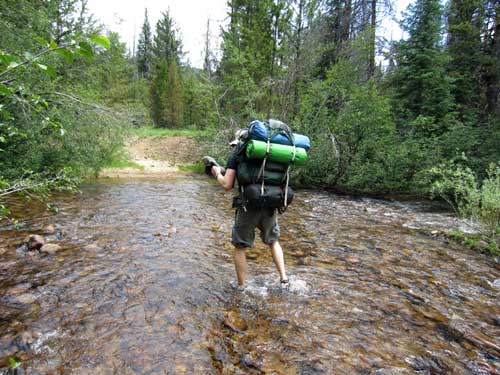
Crossing #3 of the day

#5
We then arrived at a trail intersection where the sign had fallen down. We weren't sure which way to go since the map, while helpful, was proving not to be super accurate. So we went left. After a while we decided we must have chosen poorly since the trail wasn't doing what the map said it should. But it turned out that we had chosen wisely since eventually we came across another sign putting us correctly back on the map.

Which one to chose?

Uh, so not helpful.

Stopping for some lunch
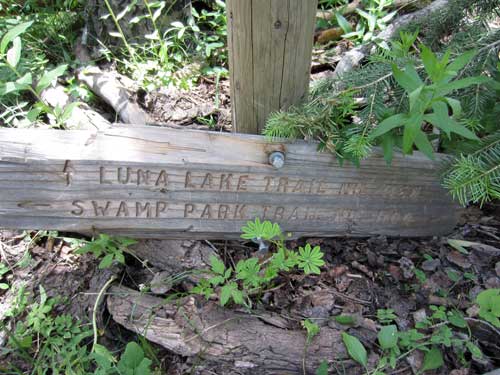
A sign tells us we are exactly where we were hoped we were.
It wasn't too much farther to the swam from here. We had almost gained another 1,000 feet in elevation. Suddenly the trees changed from stands of joyful aspens to a forest of giant, dead pines. Bark beetle kill!
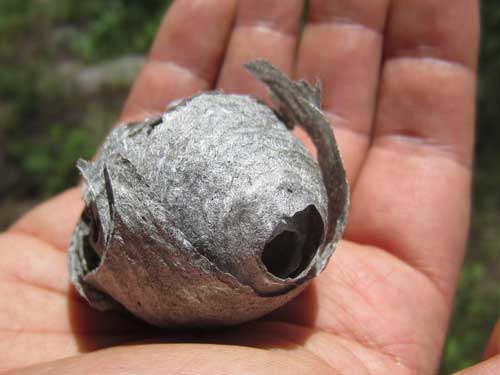
Paper wasps gather fibers from dead wood and plant stems, mix it with their saliva, and make water-resistant papery nests.

Aw, really? Even all the way out here?


An intimidating atmosphere
We emerged from the dark forest into the open swamp. We had made it! Unfortunately we only went a short distance before encountering another wide river. Mosquitoes were absolutely everywhere! We decided not to take off our shoes and cross it (and become living pincushions) but instead find a place to camp on this side of the river. That, however, was not such an easy task. There were very few areas both far enough from the dead trees (reading the headlines now: hikers crushed in middle of the night by falling tree) and also far enough from the river. We found a barely acceptable spot, quickly set up the tent and hurried inside.

The light at the end of the forest

Our 'trail'

Elk don't have to take off their shoes to cross.

Within moments of setting down my pack, it was covered with biting flies and mosquitoes.
Once inside the tent, we realized we had two problems. First, there were almost as many mosquitos inside the tent as outside, and second, there was really no way we could go back outside to, say, eat. We'd simply be eaten instead. After a very brief discussion, we agreed to pack up the tent and head back down the hill a bit to find someplace more bearable to spend the rest of the day and the night.

Inside the tent
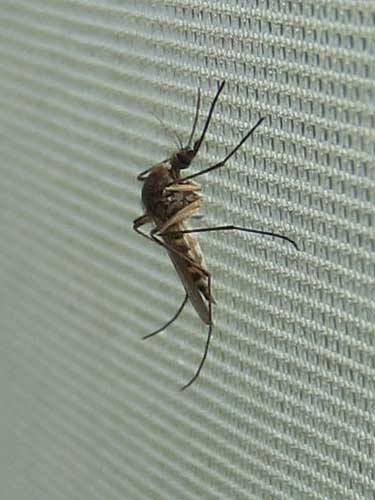
Some interesting mosquito facts:
- Only female mosquitoes bite (they need the protein for their eggs). The males feed on flower nectar.
- Not all mosquito species feed on people. Some prefer other critters such as amphibians or birds.
- Mosquitoes are responsible for more deaths than any other animal on the planet due to the deadly diseases they can carry such as malaria, dengue fever, yellow fever and encephalitis.
-Their wings beat 300-600 times per second, causing that annoying buzzing sound. In comparission, hummingbirds range from 50 to 200 times per second.
- Mosquitoes require water to breed. The water can be as shallow as just few inches.
- An adult mosquito may live up to 6 months.
- Mosquitoes can detect carbon dioxide from 75 feet away. This is how they find you.

Quickly taking down the tent
We grabbed our things and scurried away... doing only quick "walk by" shots of flowers.

More Little Pink Elephants

Bracted Lousewort is very closely related to the Pink Elephants. The name lousewort comes from the old belief that when livestock ate these plants, they got lice.

King's Crown was only just beginning to bloom.

Death Camas (also Wand Lily, Poison Sego and Alkalai Grass) is very poisonous, both for humans and livestock. This is the mountain species which is much more airy than the meadow version.

Marsh Marigolds are one of the first flowers to bloom each year, often pushing their way though the spring snow.

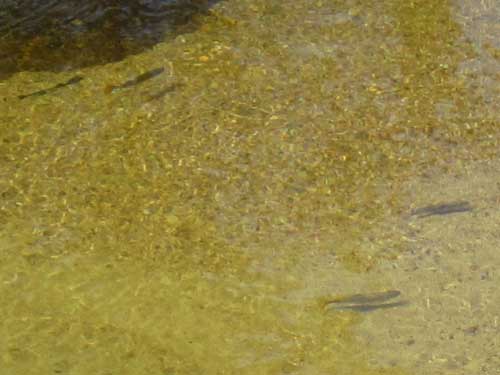
These tiny fish didn't seem to mind the excedingly cold water!

